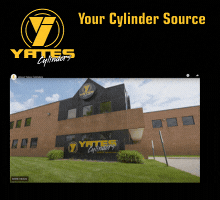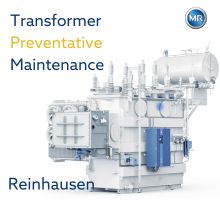Oregon Steel Reports Record 3rd Quarter Results
10/27/2006 -
Oct. 27, 2006 — Oregon Steel Mills, Inc. reported record net income of $50.6 million on record sales of $429.1 million for the third quarter, and net income of $127.9 million for the first nine months of 2006. Results reflect a 185% increase in third quarter 2006 operating income and a 176% increase in pretax income compared to the prior year.
|
Record net income of $50.6 million ($1.40 per diluted share on 36.1 million shares) compares to net income of $20.2 million ($.57 per diluted share on 35.8 million shares) in the third quarter of 2005. Sales increased 43% to a record $429.1 million at an average selling price of $951 per ton, which compares with sales of $299.7 million in the third quarter 2005 at an average sales price per ton of $785. The company’s net income of $127.9 million for the first nine months of 2006 exceeded 2004’s previous record annual net income of $116.7 million.
Total shipments of 451,000 tons were 18% higher than 2005 third quarter shipments of 381,800 tons. The increase in shipments was primarily due to increased shipments of plate and coil, rail and welded and seamless pipe products, partially offset by lower shipments of rod and bar products. The primary reason for the decline in rod and bar shipments is due to the company’s decision to divert raw steel to the production of seamless pipe product and away from rod and bar products. The company’s seamless pipe mill was restarted in December 2005 and shipped 17,200 tons of seamless pipe during the third quarter of 2006. The increase in sales was primarily due to the increased shipments of higher-selling-priced plate and welded pipe, the addition of seamless pipe (currently the company’s highest averaged selling priced product) and higher average selling prices for all of the company’s products.
As previously reported, on July 17, 2006, the company completed the redemption of all of its outstanding 10% First Mortgage Notes due on July 15, 2009, at a price equal to 105% of the principal amount of the Notes being redeemed. In connection with the redemption of the Notes, the company recorded a pretax charge of $21.4 million ($.39 per diluted share) in the third quarter of 2006. Net income before the Note redemption charge was $64.5 million ($1.79 per diluted share).
Operating income was $102.2 million, an average of $227 per ton, both of which are quarterly records for the company. This compares to operating income for the third quarter of 2005 of $35.8 million, an average of $94 per ton. Operating margin as a percentage of sales increased from 11.9% to 23.8% as the company realized margin expansion in almost all of its product lines. Third quarter 2005 operating income was negatively impacted by approximately $5 million of pretax costs ($.10 per diluted share) related to the new electric arc furnace installation and caster rebuild and related equipment outages (Furnace Installation) at the company’s majority-owned subsidiary, Rocky Mountain Steel Mills (RMSM).
Earnings before interest, taxes, depreciation and amortization (EBITDA) was $112.3 million, also a quarterly record. This compares to EBITDA for the third quarter of 2005 of $45.9 million. Increased operating income, operating margin and EBITDA reflects the higher shipments, improved product mix and higher average selling prices, as well as the absence of the RMSM Furnace Installation expenses and lower steel slab costs at the company’s Oregon Steel Division, partially offset by higher scrap costs at the RMSM Division.
The company had an effective income tax rate of approximately 35% in the third quarter of 2006. This compares to an effective income tax rate in the third quarter of 2005 of 28%. The effective income tax rate for the third quarter of 2005 varied from the combined state and federal statutory rate principally because the company reversed a portion of the valuation allowance ($3.4 million) previously established due to less uncertainty regarding the realization of state tax credits and net operating loss carry-forwards. The company expects to have an effective income tax rate for all of 2006 of approximately 35%.
Financing and Liquidity—At September 30, 2006, total debt outstanding, net of cash, cash equivalents and short-term investments was $18.6 million compared to $236.6 million at September 30, 2005, and $132.1 million at December 31, 2005. As a result of the Note redemption and lower net debt outstanding, net interest cost declined to $1.1 million in the third quarter of 2006 from $6.8 million in the third quarter of 2005.
During the third quarter of 2006, the company incurred capital expenditures of $22.4 million and depreciation and amortization was $11.2 million. For all of 2006, the company anticipates that capital expenditures and depreciation and amortization will be approximately $80 million and $46 million, respectively.
Outlook—For the fourth quarter of 2006 and into 2007, the company expects its primary facilities to operate at high production levels, except for the RMSM Division rod and bar mill, which has operated at 60% of its rated capacity throughout 2006. The new large diameter pipe mill in Portland, Ore., has been commissioned and has received its American Petroleum Institute (API) certificate to manufacture API certified line pipe. Production at the new mill has begun, with production and shipments for the fourth quarter of 2006 estimated to be 40,000 tons and 28,000 tons, respectively. The mill is expected to reach its rated production capability of 18,000 tons per month in November. The company’s large diameter pipe mill in Camrose, Alta., was down for scheduled maintenance during the first three weeks of October. Production has resumed with expected production and shipments for the fourth quarter of 2006 estimated to be 45,000 tons and 35,000 tons, respectively.
The combined annual production capability of the two large diameter pipe mills based on current product mix is approximately 430,000 tons. To support the production and material supply chain build-up at the large-diameter pipe mills, during the fourth quarter of 2006 the company’s Portland, Ore., steel mill will produce 40,000 more tons of plate and coil for conversion into pipe for the pipe mills than will be billed out as large diameter pipe to customers in the fourth quarter. This material flow will have a negative overall effect on total customer sales and shipments for the fourth quarter.
For 2006, the company expects to ship approximately 1.66 million tons of products and generate approximately $1.5 billion in sales. In the Oregon Steel Division the product mix is expected to consist of approximately 516,000 tons of plate and coil, 265,000 tons of welded pipe and 77,000 tons of structural tubing. The RMSM Division expects to ship approximately 448,000 tons of rail, 288,000 tons of rod and bar products and 65,000 tons of seamless pipe.
Management Comments—Jim Declusin, the company’s President and CEO, stated, “Oregon Steel is pleased to announce for our company, stockholders and employees our best-ever quarterly financial performance. All of our market categories performed well during the third quarter, as both of our operating divisions set records for profitability. For the fourth quarter, we expect pricing for most of our products to remain steady. While overall margins will be strong, they will not be as high as the level realized in the third quarter due to what we believe to be a temporary increase in the cost of slab and reduced shipments, as we start to fill the supply chain at our large diameter pipe mills. In addition, our shipments will also be negatively impacted as our distributor energy customers reduce their inventories in response to lower energy prices. We feel that this reduction is a temporary issue, as the North American rig count continues to be at a high level and end user consumption is robust. As a result of these factors, we expect operating income for fourth quarter to be down relative to the third quarter.”
“Looking forward into 2007, we are optimistic about the future. We believe that our plate, rail and energy markets will continue to be strong and, with our large diameter pipe mills booked into 2008, we estimate that our shipments could exceed 2 million tons for the first time ever, resulting in another record annual performance for our company.”
Headquartered in Portland, Ore., Oregon Steel Mills is organized into two divisions. The Oregon Steel Division produces as-rolled and heat-treated steel plate, coil, welded pipe (both large and small diameter line pipe and casing) and structural tubing from plants located in Portland, Ore., and Camrose, Alta., Canada. The Rocky Mountain Steel Mills Division, located in Pueblo, Colo., produces steel rail, rod and bar, and seamless tubular products.



-(220-x-200-px)-(130-x-130-px)-(220-x-200-px).jpg?lang=en-US&ext=.jpg)
.gif?width=200&height=200&mediaprotectionhash=ddb07947ad3b4ab959a83714461eccd5c6895f370695eb035a9ff7aa736f8ad9&ext=.gif)





